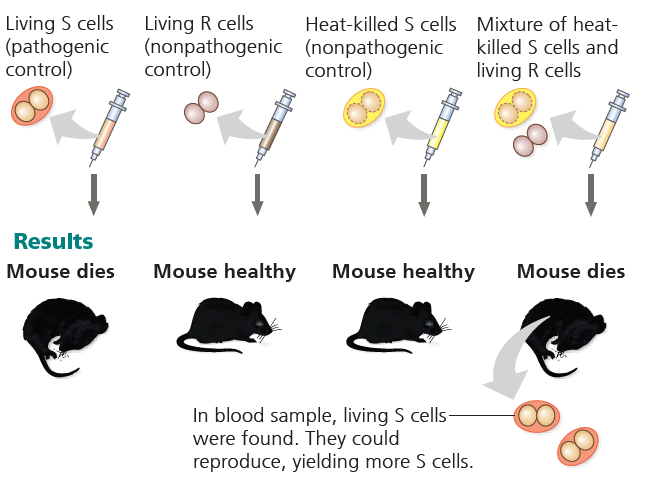Table of Contents
Introduction:
- Experiment conducted by Frederick Griffith in 1928
- First experiment to demonstrate genetic material transfer between bacteria
- Laid foundation for discovery of DNA as genetic material and paved way for molecular biology
The Experiment:
- Involved two strains of Streptococcus pneumoniae bacteria: virulent (S) and non-virulent (R)
- Virulent strain caused pneumonia and had a smooth appearance due to polysaccharide capsule
- Non-virulent strain had a rough appearance
Steps of Experiment:
- Mice were injected with virulent strain and they died
- Mice were injected with a mixture of virulent and non-virulent strains and they did not die
- The non-virulent strain had transformed into the virulent strain
- Autopsy showed that the non-virulent bacteria had taken up the virulence factor (polysaccharide capsule) from the dead virulent bacteria
- Further experiments showed that a substance from the dead virulent bacteria (now called the transforming principle) was responsible for the transformation
- The transforming principle was later identified as DNA.
Conclusion:
- The experiment demonstrated that genetic material (DNA) could be transferred from one organism to another
- The experiment was a key step in the discovery of DNA as the genetic material
- The experiment paved the way for the development of molecular biology and genetic engineering.
